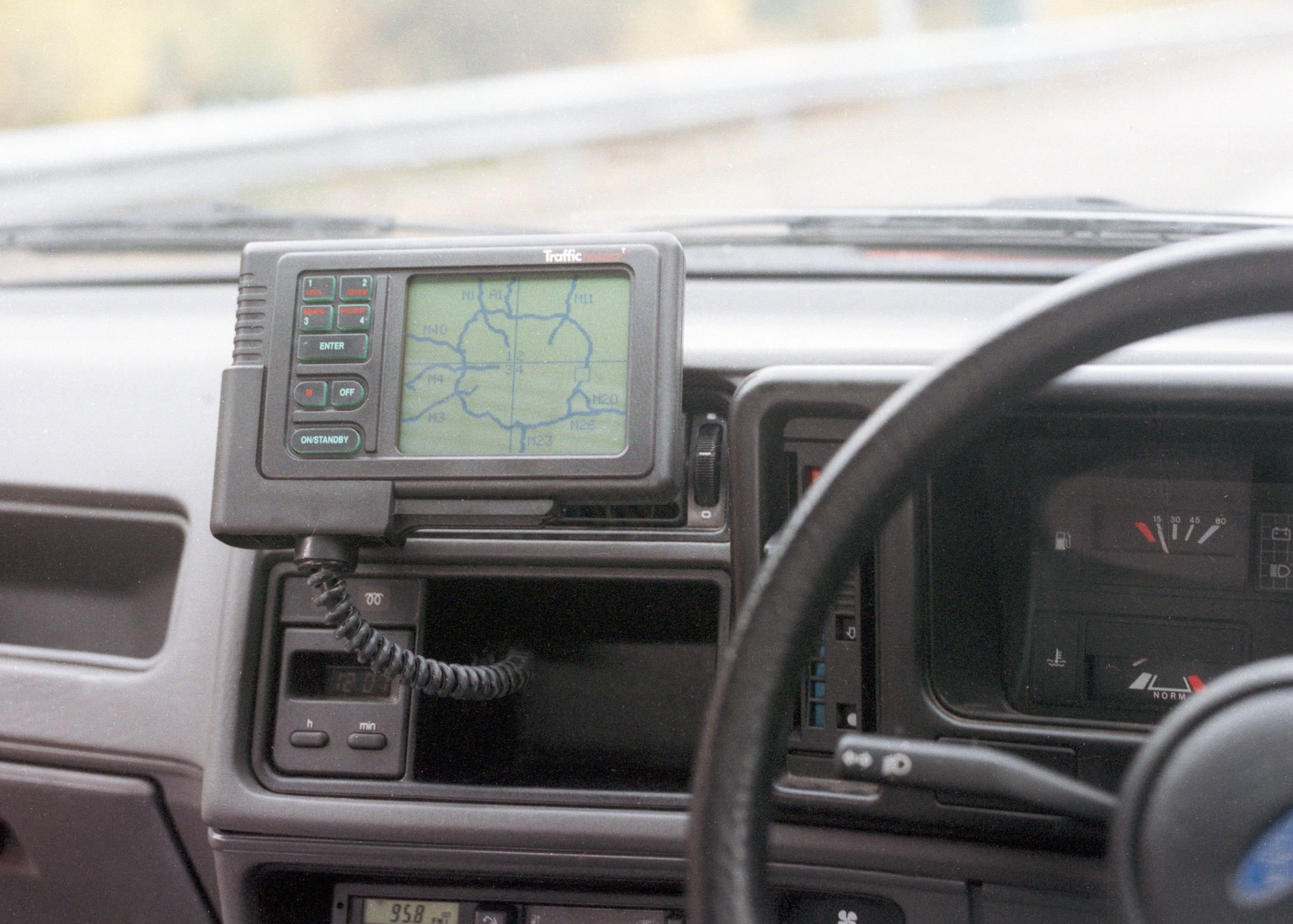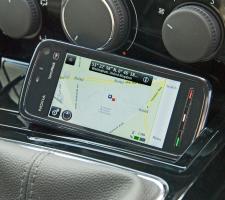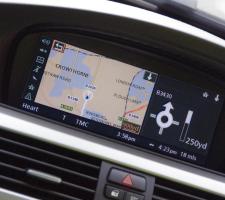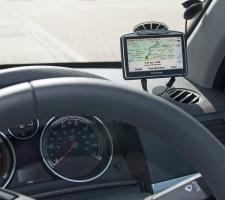
Early aftermarket devices for congestion warning and route guidance had significant HMI issues, being both cumbersome and distracting
Construction of vehicles is highly regulated; committees in Geneva develop regulations and test regimes such that vehicles offered for sale have to undergo stringent safety evaluation. These relate to the whole vehicle - not only its performance in a crash (determining its EuroNCAP star rating) but ensuring that interior fixings do not have sharp edges and are benign in the event of a crash or sudden deceleration.
As basic interaction elements of vehicles have developed (power steering and braking, and automatic transmission, for example) there has been an increasing focus on the driver's performance and, particularly, safety aspects such as distraction and inattention. In part, this has been fuelled by the explosion in popularity of aftermarket and so-called nomadic devices which are used within vehicles while driving. Nomadic devices are those brought into the vehicle by the driver and, unlike factory-fitted systems, they are not required to undergo the same range of driving-related testing.
Aftermarket devices created the market for congestion warning and route guidance products from the early 1990s. Certainly, really early devices such as the
Product evolution
Go back 10 years and even factory-fitted route guidance and information systems were a source of concern to many safety commentators because of the distraction potential of the information presented on them. As the technology (such as screen size and mapping accuracy) improved, the benefits became more apparent and factory-fitted systems achieved greater acceptance. Another concern was the use of touchscreen technology; this reduced the need for (and cost of) dedicated buttons but required very careful design to remain usable in a moving vehicle. Even with touchscreens, prices remained high for factory-fitted systems and aftermarket solutions slowly began to increase in popularity.About five years ago, aftermarket route guidance systems (also called Personal Navigation Devices (PNDs)) really made an impact on the market. These provided most of the functionality of factory-fitted devices at a fraction of the cost, with smaller screens and sucker-cup fixings. Around the same time the mobile phone industry began to suggest that its smartphone products could also become an in-vehicle platform even though, initially, their screens were rather limited. The maturing PND industry, appreciating the importance of HMI, was concerned that the smartphone's multi-purpose hardware, not being specifically designed for in-vehicle use, would provide less safe interfaces and would de-stabilise their market.
Over the last year or so, since the launch of the iPhone, the smartphone industry has gone into the ascendancy. The power, functionality and screen display of modern smartphones is extremely impressive. To a large extent this has been made possible by the large-volume consumer market of the ICT (Information and Communications Technology) and games/entertainment industry. It's not surprising that smartphones are becoming the in-vehicle nomadic device of choice; mainstream route guidance suppliers (even those previously concerned about smartphone quality) are now offering their products as 'apps' on these platforms. The consumer can now choose between PNDs which provide route guidance on dedicated hardware or the more generic smartphone platform capable of supporting a route guidance application.
Future direction
So, where do these developments leave the vehicle industry and safety regulators? These groups have never been able to respond to technology at anything like the pace of the ICT industry. What seems clear is that the next-generation motorist will own a smartphone before he or she owns a car (not vice versa) and having used such a device, he or she will want this easy-to-use and familiar functionality to be available even when driving.Vehicle manufacturers now find themselves in a changing relationship with information system suppliers. Their customers (the drivers) are demanding interfaces for their MP3 players and want low-cost route guidance even if this means using an aftermarket product. In fact, the customers realise that buying the factory system locks them into the vehicle manufacturer, whereas an aftermarket device can be easily upgraded or replaced several times during the lifetime of the vehicle and transferred to subsequent vehicles. Some OEMs have developed relationships with individual PND providers and offered specific PNDs in the vehicle package.
A report from the European Nomadic Devices eSafety Working Group has identified a number of future possibilities for PND integration within cars including: mounting instructions in the user manual of the PND; mounting positions in the user manual of the car; a look-up database with car model-specific mounting instructions for the users; proprietary OEM mounting facilities for PNDs; and a standardised electromechanical interface referred to as 'NaviFix'.
These five options differ from each other in terms of feasibility in particular with regard to organisational efforts concerning information exchange between vehicle and PND manufacturers. So, although NaviFix is considered the best solution its timescale is long and its achievability is challenging. The smartphone industry (which does not necessarily consider itself a part of the PND market) has recognised the mobile traveller as a market segment but it remains to be seen how the relationship with vehicle manufacturers will develop.
Traffic authorities similarly find themselves in a changing relationship with in-vehicle information systems. It has long been the case that the driver is in charge of the vehicle and this implies not being unsafely distracted by anything inside the cabin. There are also specific laws in many countries banning the use of handheld devices, particularly phones.
On the other hand, provision of information to travellers and road users is considered de rigueur to avoid road congestion and to support multimodal journeys, so in-vehicle information is tacitly accepted and, even, welcomed. As a specific example, the UK
Policy steers
European policy is to both increase road safety and the market for telematics products and services and so the unfolding developments in information and communication systems, including nomadic devices, is being keenly followed. TheThe ESoP is an approach to HMI design, championed by the EC with advice from human factors scientists, to identify the key design principles that are relatively invariant with technology but dependent on human behaviour and performance. One principle relevant for nomadic devices, for example, refers to keeping the drivers' fields of view clear of obstruction.
In the United States, distraction is also a key issue and the LaHood summits are a high-level policy initiative to highlight, particularly, misuse of cellphones. Following high-level collaborative agreements an EU/US distraction working group has just been formed for exchange of scientific information concerning distraction and inattention with a view to future international harmonisation.
In terms of a European 'regulatory framework', the difficulty of developing verification criteria for human machine interfaces to reflect safety in use is widely acknowledged. This points to the need for further intensified research on the one hand; on the other hand it should be possible to develop clearer definitions and verification criteria for selected elements of the ESoP (for example, secure fixing and contrast) and specifically for nomadic navigation devices including those based on smartphones.
Dr Alan Stevens is research director, transportation at TRL and has a particular interest in the driver's interaction with in-vehicle technology. He is co-Chair of the eSafety Working Group on HMI. The opinions expressed in this article are those of Dr Stevens and not necessarily those of TRL or any other organisation.












